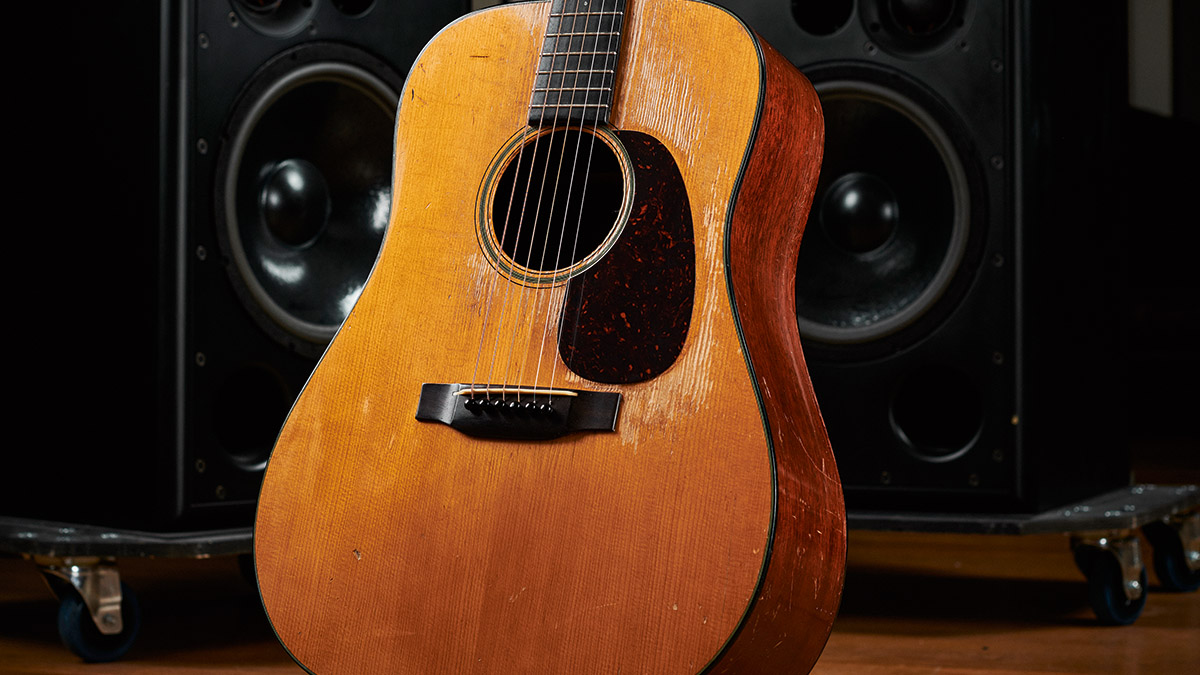
It is no overstatement to describe the Martin dreadnought as the definitive acoustic steel-string guitar. A Martin dreadnought is probably the image that instantly appears in one’s mind whenever the words “acoustic guitar” are spoken.
The company’s D-18 and D-28 models have remained best-selling standards since their introduction in the mid-1930s, and the familiar square-shouldered Martin dreadnought body is quite possibly the most copied design in the history of the guitar industry. It’s probably impossible to measure and prove, but it’s highly likely that the Martin dreadnought could be the most recorded guitar in history.
Interestingly, Martin’s first dreadnought models weren’t Martin guitars at all but rather instruments they built for the Oliver Ditson Company starting in 1916. These large-body Ditsons weren’t exactly a rip-roaring success – only a very small number of 111 and even fewer 222 models were built, but when Ditson went out of business in 1931, these models remained in production as the Martin D-1 and D-2, eventually changing to the D-18 and D-28.

The original Ditson/Martin D-1 and D-2 dreadnought design had round shoulders, a neck that joined the body at the 12th fret and a slotted headstock. Martin rapidly modernized and updated its guitar designs during the late ’20s and early ’30s, and by 1934 the dreadnought design transitioned to the square shoulder, 14-fret neck, solid headstock design that remains to this day.
The main difference between the D-18 and D-28 is that the former has mahogany back and sides while the latter has rosewood back and sides. The D-28’s tone is brighter with a more prominent aggressive attack that is ideal for lead solos, making it the preference of many bluegrass guitarists.
The D-18’s mellower, warmer tone and slightly more restrained bass makes it ideal for an arguably wider range of applications from rock rhythm playing to singer-songwriter accompaniment.
A couple important details to note should you be in the market for a used or vintage D-18 or D-28. During 1969, the materials used for the D-28 switched from Brazilian rosewood to Indian rosewood, so 1969 and earlier models inevitably sell for premium prices.
Martin dreadnoughts built during the ’70s generally have heavier bracing, finishes and other details, and a few have flaws like poor bridge placement that results in intonation issues. Also, an adjustable truss rod did not become a standard feature on these models until 1985.
There’s an extra level of refinement, dynamic responsiveness and tonal complexity that comes from the real deal that the contenders can’t match
Although numerous inexpensive acoustics that copy Martin’s dreadnought design are on the market, you’re best off saving up a few more bucks to buy a new Martin D-18 or D-28 if that’s the sound you’re after. There’s an extra level of refinement, dynamic responsiveness and tonal complexity that comes from the real deal that the contenders can’t match.
Whether that tone is the ideal manifestation of the steel-string acoustic sound or just something that our ears have found comforting and familiar after nine decades of exposure is up for debate, but nothing else sounds more like a Martin than a real Martin.







